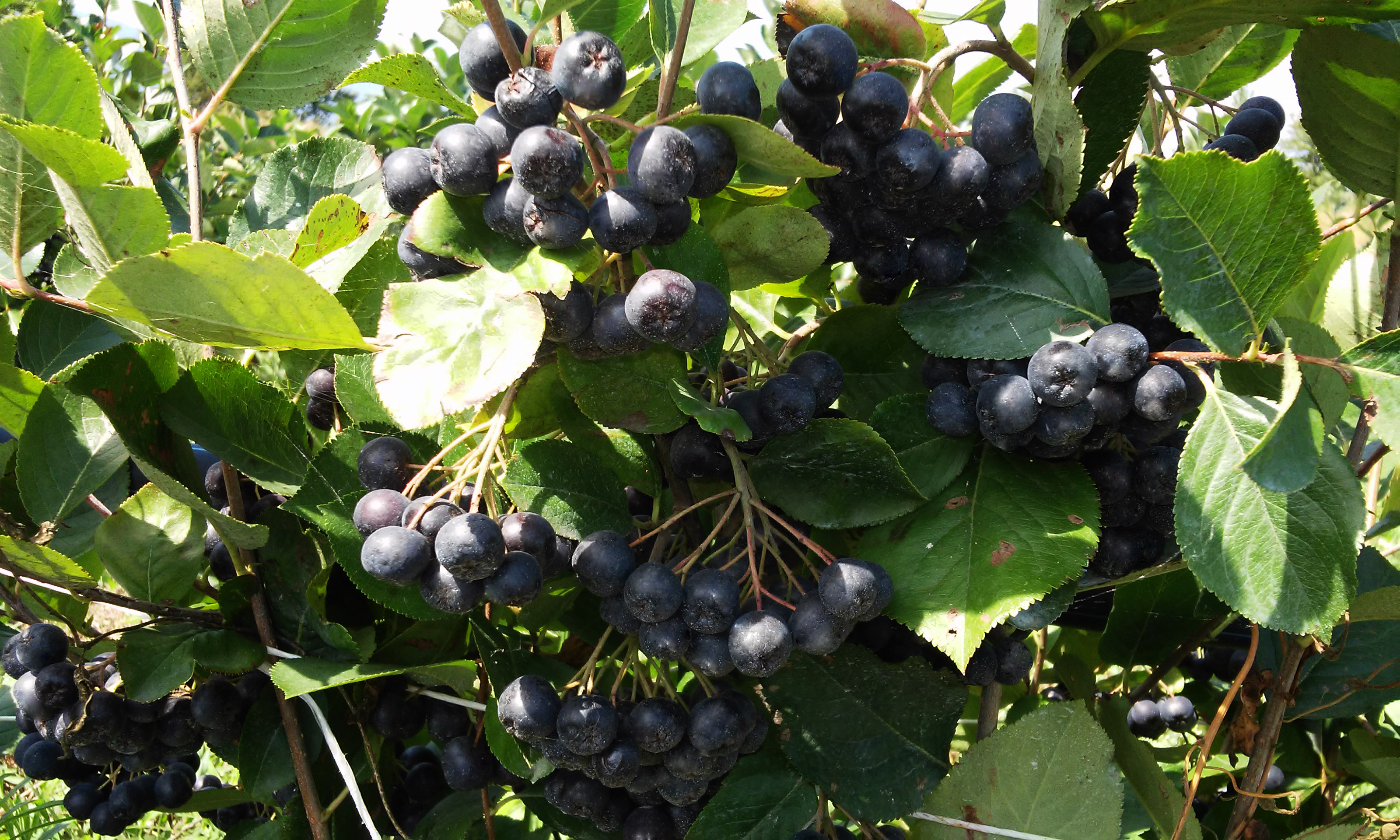General information
Aronia berry is a genus of deciduous shrubs, known as “black chokeberry”, in the family of Rosaceae, native to eastern North America and most commonly found in wet woods and swamps. The genus contains three species: red (aronia arbutifolia), black (aronia melanocarpa) and purple (aronia prunifolia). The black chokeberry or aronia melanocarpa is the one that we cultivate in bioAridaia, due to its potential health benefits and we will focus from now on.
It lives up to 100 years and it has height of 1 to 3 meters, while the fruit is black, 7-10 mm wide. It can be cultivated as ornamental plant and as well as food product. The berries can be eaten raw off the bush, but are more frequently processed. They can be found as dry berries but also in wine, jam, syrup, juice, soft spreads, tea, salsa, chili starters, extracts, beer and ice cream.

Nutrient and vitamin content
Aronia berry has:
- High concentration of polyphenols (especially anthocyanin) and that can explain the “almost black” color of the berries. This is one of the main reasons why aronia has attracted scientific interest. Total polyphenol content is 1752 mg per 100 g of fresh berries, ranking aronia among the plants with the highest concentration.
- Very high concentration of Vitamin C (15-30 mg per 100 g).
- Vitamins of compex B: B1, B2, B3, B6, B9.
- Many other vitamins, like A, as well as minerals, potassium and phosphorous.
References
1. Wu X, Gu L, Prior RL, McKay S (2004). "Characterization of anthocyanins and proanthocyanidins in some cultivars of Ribes, Aronia and Sambucus and their antioxidant capacity". Journal of Agricultural and Food Chemistry. 52 (26): 7846–56. PMID 15612766. doi:10.1021/jf0486850.
2. Wu X; et al. (2006). "Concentrations of anthocyanins in common foods in the United States and estimation of normal consumption". Journal of Agricultural and Food Chemistry. 54 (1): 4069–75.
